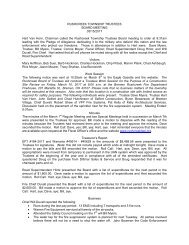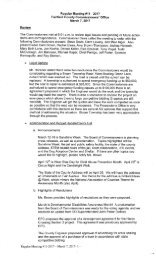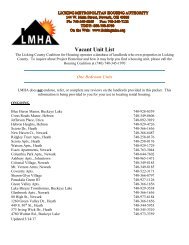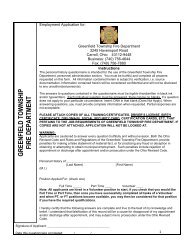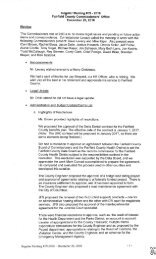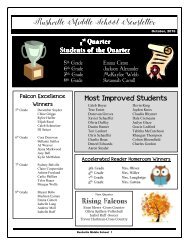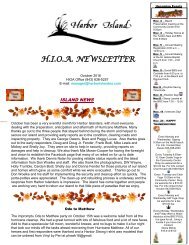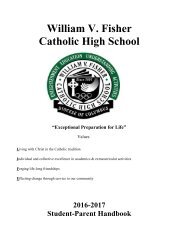Community
2016-Fairfield-County-Community-Health-Assessment
2016-Fairfield-County-Community-Health-Assessment
You also want an ePaper? Increase the reach of your titles
YUMPU automatically turns print PDFs into web optimized ePapers that Google loves.
SAMPLING | Adolescent Survey<br />
A sample size of 375 adolescents was needed to ensure a 95% confidence interval with a<br />
corresponding 5% margin of error. Students were randomly selected and surveyed in the schools.<br />
SAMPLING | 0-11 Survey<br />
Children ages 0-11 residing in Fairfield County were used as the sampling frame<br />
for the surveys. Using U.S. Census Bureau data, it was determined that 24,586 children ages 0-11<br />
reside in Fairfield County. The investigators conducted a power analysis based on a post-hoc<br />
distribution of variation in responses (70/30 split) to determine what sample size was needed to<br />
ensure a 95% confidence level with corresponding confidence interval of 5% (i.e., we can be 95%<br />
sure that the “true” population responses are within a 5% margin of error). Because many of the<br />
items were identical between the 0-5 and 6-11 surveys, the responses were combined to analyze<br />
data for children 0-11. The sample size required to generalize to children ages 0-11 was 378. The<br />
random sample of mailing addresses of parents of children 0-11 from Fairfield County was<br />
obtained from Allegra Marketing Services in Louisville, KY.<br />
PROCEDURE | Adult Survey<br />
Prior to mailing the survey to adults, an advance letter was mailed to 1,200 adults in<br />
Fairfield County. This advance letter was personalized, printed on Fairfield Medical Center<br />
stationery and was signed by John R. Janoso Jr., President and CEO, Fairfield Medical Center. The<br />
letter introduced the county health assessment project and informed the readers that they may<br />
be randomly selected to receive the survey. The letter also explained that the respondents’<br />
confidentiality would be protected and encouraged the readers to complete and return the<br />
survey promptly if they were selected.<br />
Three weeks following the advance letter, a three-wave mailing procedure was<br />
implemented to maximize the survey return rate. The initial mailing included a personalized hand<br />
signed cover letter (on Fairfield Medical Center stationery) describing the purpose of the study; a<br />
questionnaire printed on colored paper; a self-addressed stamped return envelope; and a $2<br />
incentive. Approximately three weeks after the first mailing, a second wave mailing included<br />
another personalized cover letter encouraging them to reply, another copy of the questionnaire<br />
on colored paper, and another reply envelope. A third wave postcard was sent three weeks after<br />
the second wave mailing. Surveys returned as undeliverable were not replaced with another<br />
potential respondent.<br />
The response rate for the mailing was 42% (n=464: CI=± 4.54). This return rate and sample<br />
size means that the responses in the health assessment should be representative of the entire<br />
county.<br />
PROCEDURE | Adolescent Survey<br />
The survey was approved by all superintendents. Schools and grades were randomly<br />
selected. Each student in that grade had to have an equal chance of being in the class that was<br />
selected, such as a general English or health class. Classrooms were chosen by the school<br />
principal. Passive permission slips were mailed home to parents of any student whose class was<br />
selected to participate. The response rate was 96% (n=514: CI=± 4.25).<br />
6



